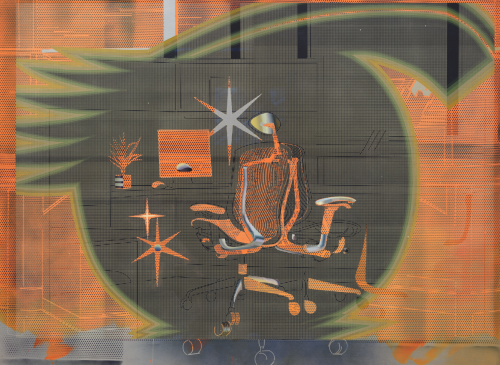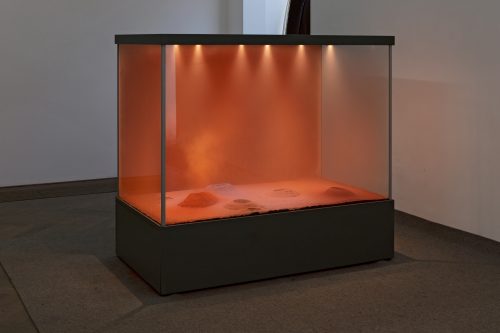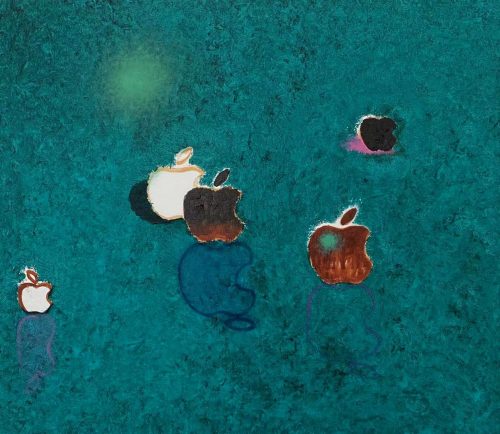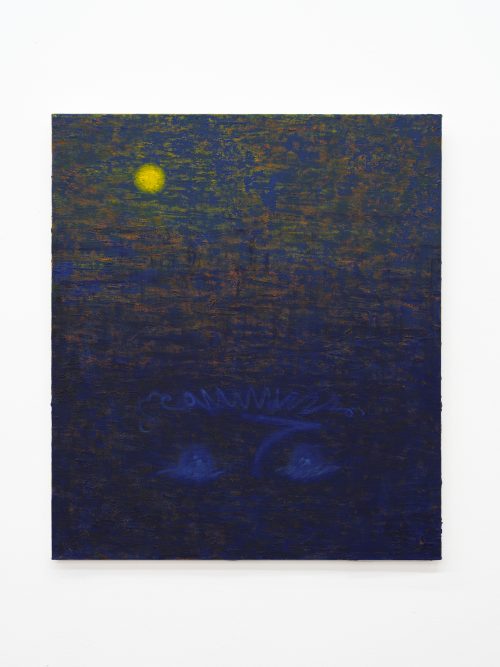VIP Preview
September 21, 2021 – September 23, 2021
Public Day
September 24, 2021 – September 26, 2021
VIP Preview
September 21, 2021 – September 23, 2021
Public Day
September 24, 2021 – September 26, 2021
Antenna Space is pleased to announce our participation in Art Basel Basel this year. We will be presenting the works by artists Cui Jie, Cheng Xinyi, Guan Xiao, Zhou Siwei and Dora Budor at Booth No. P14.
The booth project is going to explore aspects of ecological environment, destabilized identities, bio-morphic abstraction, digital signals, and artificial visual effects in the cyborgian future that the human society is engaged with, proposing that dynamic co-existence among human, species and machines as a world-changing fiction forming process of its own.
In contemporary sci-fi imagination, the hybrid of machine and organism not only exists in singular creature where the chimeric fusion blurs the lines between the animate and the inanimate, but also in the process of “re-worlding”—artists take the web of natural organism as a part of the construction of social reality, blending the natural and crafted into an integral consciousness of the now.
If ergonomic chairs are the prostheses that are reconstituting the body, chairs in sci-fi movies are radical expressions of ergonomics. “To make a good chair” is a dictum in the Bauhaus period and Cui Jie detected the chair mutating with the tensions from architecture and ergonomics. A whole set of technology is establishing the semiotic system of ergonomics, which even penetrates our imagination of the future. In Contessa ll Chair 3 Cui portrays an office scene where an okamura contessa II chair plays the main role and some standard green plants are standing on the table with a computer monitor in an uncanny black screen. The scenery as a whole is as if seen through cyborgian eyes. Together with Cui’s three recent paper works, one can therefore discern the sci-fi aesthetics in her superimposition of two or more than two ergonomic chairs whose skeletons are external.
Cheng Xinyi’s paintings are often described as sensual as she can well capture the sensitive and introspective aspects of intimate relationships. In art history, kissing between lovers, as the classic subject matter of intimacy, is often directly represented, but in Cheng’s expression it is secretive and unspeakable underneath the ordinary course. “Kissing is a packed situation,” she observes, “with two noses and two mouths, and even more suffocative with glasses.” In her painting Where do the noses go?, two young characters, slightly prudish, kiss each other on the lips, and in the centre their figures are fragmented unexpectedly. How can they breathe? What are they going to do about their noses? The plain scene is refracted through a pair of glasses while this distortion seems reasonable.
Origin II (Burning of the Houses) by Dora Budor comes from her Origin series. This installation resembles an amalgam of a natural history vitrine, a laboratory incubator and an industrial test chamber. In its inner enclosure it periodically emits dust and pigments whose colours and movement recall the atmosphere of William Turner’s historical paintings, which are said to portray visible changes in the Earth’s atmosphere due to industrial pollution and volcanic dust. Budor activates airflows in her installation to craft a psychogeography of dirt and waste expressive of the era spanning the Industrial Revolution to the present day.
Since her solo exhibition “8 Stories” at Antenna Space in 2020, Guan Xiao have rendered an average state of identity-bearing characters, undefinable appearance and endless rhetoric with no conflict in her sculptures. In terms of their materials and forms, industrial, handmade, ready-made, and natural objects all together constitute the final aesthetics. Strawberry eye uses the most classic ready-mades in Guan’s sculptures—the wheel hubs—and when she appropriates such industrial products, their deconstructed function conveys the unexpected effect visually. In recent works, Guan has also shown her favour to ceramics, a traditional material indicative of an organic and sci-fi texture here.
Gazing at the nature, in “New Phone for Every Week” Zhou Siwei has presented a sense of acceleration, a way to turn transient perception into graphics and colours through an imagination in a spinning new “nature”. In his new painting Baijiu Blonde (Dream Blue), Zhou formulates a design product dedicated to commercial marketing and cultural export—an over-packaged Baijiu bottle, a hybrid of femininity and cultures of East and West. When this ancient instrument is collaged with elements such as sex, social class and finance, it is aesthetically reduced into a 53-degree, health-damaging contemporary symbol.

Acrylic and spray paint on canvas
250 x 180 cm

Color pencil on paper
21 x 29.6 cm

Color pencil on paper
29.6 x 21 cm

Color pencil on paper
29.6 x 21 cm

Color Pencil on Paper
36.2 × 27.5 cm

Color Pencil on Paper
27.5 × 36.2 cm

Oil on canvas
60 x 73 cm

Custom environmental chamber (reactive electronic system, compressor, valves, 3D printed elements, aluminum, acrylic, LED light, glass, wood, paint), organic and synthetic pigments, diatomaceous earth, FX dust, felt
Dimensions Variable
Chamber: 152 x 160 x 86cm

Oil on canvas
160 x 130 cm

Oil on canvas
70 x 80 cm

Oil on canvas
80 x 70 cm

Oil on canvas
120 x 100 cm

Oil on canvas
80 x 70 cm

Oil on canvas
120 x 100 cm

Rim, ceramic
108 x 78 x 23 cm
Please scan the QR code to follow us on WeChat :天线空间ANTENNASPACE
